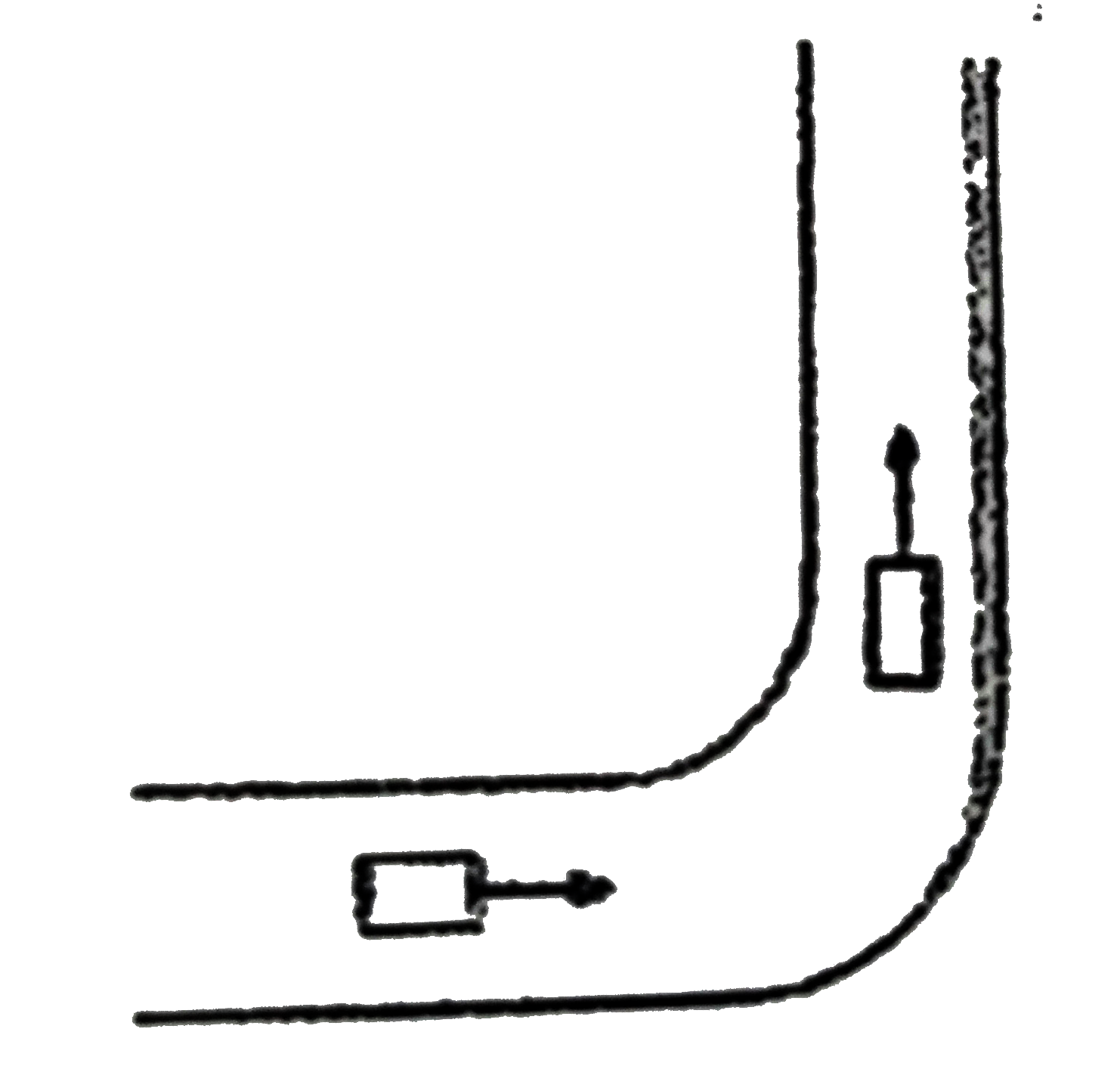A car moving on a harizontal road whose position changes with time t as x3t2+1 compute its average speed (average rate of change in position (vavg=(change in positiontime interval=ΔxΔt) between
(i) From 2sec to 3sec (ii) From 2sec to 2.1sec (iii) From 2sec to 2.001sec lt brgt (iv) From 2sec to 2.0001sec (v) at 2sec (instantaneous rate of change )
For t=2sec to 3sec, we have Δt=1sec
x(at t=3sec.)=3(3)2+1=28m
x(at t=2sec.)=3(2)2+1=13m
Δx=28m−13m=15m
Thus vaverage=ΔxΔt=15m/1sec=15ms−1
(ii) For t=2.1sec, we have Δt=0.1sec
x−3(2.1)2+1=14.23m and Δx=0.012003m
(iii) for t=2.001sec, we have Δt=0.001sec
x=3(2.001)2+1=13.012003m/andΔx=0.012003m
Thus vaverage=ΔxΔt=0.012003m/0.001sec=12.003ms−1
(iv) The student may verify that for t=2.00001sec
vvag=12.00003ms−1
(v) Also find instantaneus rate of change in position (instantaneous speed) at 2 sec.
vins=x2−x1t2−t1
here t1=2sec. and also t2=2sec.
vins=3(2)2+1−3(2)2−12−2=00, It is undefined.
So Liebnitz suggest try it like that
t1=2sec.,t2=2+Δt
vavg=3(2+Δt)2+1−3(2)2−12+Δt−2=Δt2+12Δ2Δt=Δt+12
Then he said let's make Δt→0, means Δt approaches zero not equal to zero . So, t2 almost becomes 2 sec. and the vegavg becomes v∈s.
Liebniz conclude that althrough the method is approximate but result is exact.
In calculus notation
vins=LimvavgΔt→o
vins=LimΔt→0(Δ+12)=12m/s
∴vinst=ΔxΔt
vinst=LimΔt→0ΔxΔt=dxdt (it is known as derivative of x with respect to t)
Topper's Solved these Questions
- UNIT DIMENSION, VECTOR & BASIC MATHSBOOK - BANSALCHAPTER - UNIT DIMENSION, VECTOR & BASIC MATHSEXERCISE - Solved Example
17 Videos
- UNIT DIMENSION, VECTOR & BASIC MATHSBOOK - BANSALCHAPTER - UNIT DIMENSION, VECTOR & BASIC MATHSEXERCISE - PRACTICE EXERCISE
4 Videos
- KINETIC THEORY OF GASESBOOK - BANSALCHAPTER - KINETIC THEORY OF GASESEXERCISE - Section-B
13 Videos
Similar Questions
A car is moving with 20ms−1 from west to east and takes left turn in 5sec without changing its speed find average acceleration of the car during period of 5 sec.

View SolutionA particle is moving along straight line whose position x at time t is described by x=t3−t2 where x is in meters and tis in seconds . Then the average acceleration from t=2 sec. to t=4 sec, is :
View Solution
Knowledge Check
A particle is moving along straight line whose position x at time t is described by x=t3−t2 where x is in meters and tis in seconds . Then the average acceleration from t=2 sec. to t=4 sec, is :
A16m/s2B18m/s2C22m/s2D10m/s2If acceleration of particle changing with time is a = (4t-2) m/s2 during one dimensional motion find change in velocity between (t = 0 sec) to t = 2 sec.
A4m/sB2m/sC6m/sDzeroA particle's position as a function of time is described as y(t)=2t2+3t+4. What is the average velocity of the particle from t=0 to t=3 sec ?
A3 m/secB6 m/secC9 m/secD12 m/sec
Position of a particle at any instant is given by x=3t2+1 , where x is in m and t in sec. Its average velocity in the time interval t=2 sec to t=3 sec will be :
View SolutionSuppose that the position function for a particle is given as ⃗ r(t)=x(t)ˆi+y(t)ˆj with x(t)=t+1 and y(t)=(t^(2)/8)+1) The ratio of magnitude of average velocity (during time interval t=2 to 4sec) to the speed at t=2sec is
View SolutionPosition of a particle at any instant is given by x=3t2+1 , where x is in m and t in sec. Its average velocity in the time interval t=2 sec to t=3 sec will be :
View Solution(1+sec2θ)(1+sec22θ)(1+sec23 is equal is
View SolutionFor a positive integer n, let fn(θ)=(tanθ2)(1+secθ)(1+sec2θ)(1+sec4θ)....(1+sec2nθ) Then
View Solution
